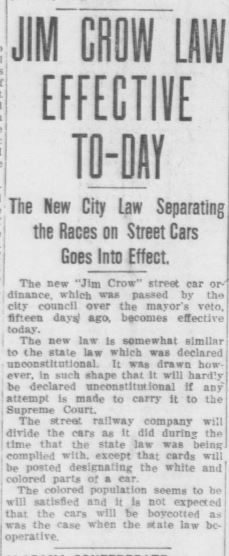
The citizens of turn-of-the-century Pensacola began the decade within a racially diverse, integrated community. While the city’s African American residents did not enjoy the full range of public accommodations as did their white counterparts, Pensacola’s neighborhoods, places of employment, city streetcars, and other public spaces carried few restrictions. The in-migration of both whites and African Americans from other areas of the South constituted one aspect of the complex circumstances which led to the rise of racial tensions within the community.
In October 1905, Pensacola’s City Council passed the first in a series of Jim Crow ordinances aimed at restricting the liberties of the city’s black population. This October 13 Pensacola Journal article announces the that the ordinance, which imposed segregated seating on the city’s streetcars, would take effect on that day. Although this law paralleled a Florida law that the state Supreme Court had found unconstitutional, the article offers assurances that the local ordinance had been written in such a way as to avoid a similar fate.
Follow the links below to examine demographic data collected from the 1901-1910 Pensacola City Directories and the 1910 Federal Census.
